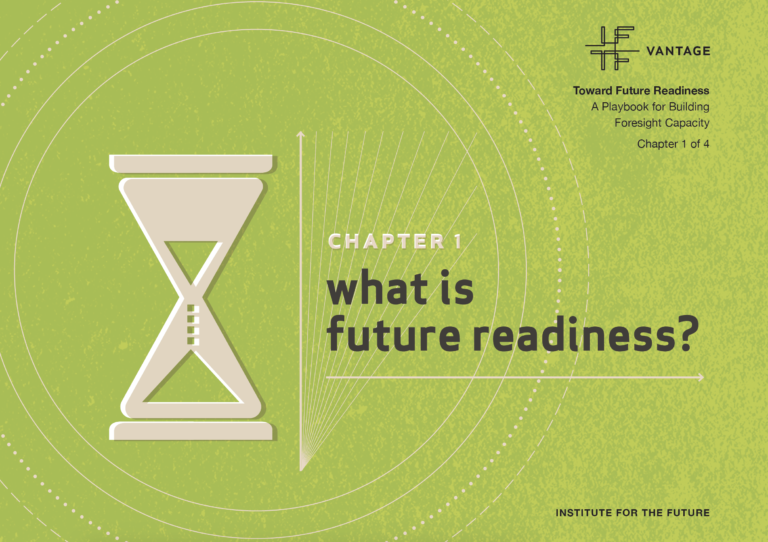The situation that many organizations now find themselves in offers ample evidence of the costs of failing to organize for the future. Operating on a time horizon that extends beyond the immediate present can improve how organizations perform on traditional metrics, while also opening up opportunities to fundamentally redefine what success looks like—whether in the private or public sector. A long-term view gives future-ready organizations the ability to redefine success in ways that are more beneficial to a larger number of people.
What do future-ready organizations do? They actively prepare to face systemic shocks and, through the process of adapting, develop resiliency to withstand them. Likewise, they organize to make sense of the changing landscape to pursue emerging and unexpected opportunities.
To build future-readiness, organizations need to adopt a set of frameworks, tools, activities, and practices that lead to the establishment of three essential capacities that enable organizations to: DETECT changes on the horizon that may pose threats or opportunities; RESPOND by uncovering specific implications of future change and plan accordingly; and EVOLVE to better thrive in the environment of anticipated future change.
The Future-Readiness Playbook is designed to provide a set of techniques and approaches for using strategic foresight in your own work, with your team, and across your organization. From starting a foresight practice to scaling it to overcoming short-term institutional barriers, it provides a helpful resource to help you embed foresight and future-readiness across your organization. The playbook is organized by theme in four chapters:
CHAPTER 1 | What is future readiness?
Future readiness is a state that’s achieved by practicing strategic foresight with an awareness of the larger systems that an organization depends on and shapes. This chapter presents the value of strategic foresight, explores how foresight connects to the present, and helps the reader understand the value of different time horizons and the benefits of taking a systems approach to the future.CHAPTER 2 | Why do strategic foresight?
Strategic foresight is a proactive way of engaging with change. This chapter compares strategic foresight with other futures-thinking disciplines, explores the role of foresight in organizations, and discusses the kind of results foresight yields.CHAPTER 3 | How does strategic foresight work in an organization?
A strategic foresight practice can take many forms in an organization. This chapter examines what’s needed in a foresight team, where to integrate foresight within an organization, how to make foresight relevant and urgent, and how to scale foresight in an organization.CHAPTER 4 | How do I implement strategic foresight in my organization?
This chapter covers how to start a foresight practice, and how to create a foresight project that overcomes institutional barriers for future-oriented business decision-making, and that will be embraced and practiced within an organization.
IFTF Vantage learned from foresight practitioners and leaders to understand the strategies, techniques, and best practices for using foresight to make organizations more future-ready. IFTF Vantage conducted ethnographic interviews with 33 foresight professionals and surveyed more than 400 leaders in partnership with the Nuremberg Institute for Market Decisions to understand how to shift present-day decisions to be more long-term oriented.

